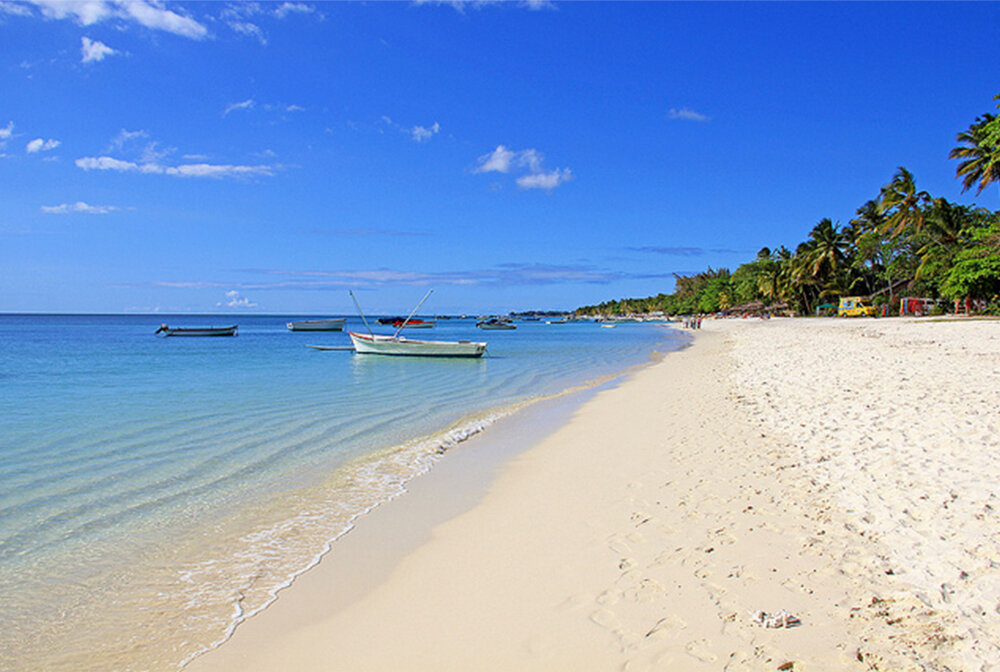Bacteria to the Rescue: Using Microbial Bioremediation to Clean Up Oil Spills
By Grace Bukowski-Thall
Mauritius beach (Wikimedia Commons)
On July 25, 2020 the Japanese oil ship MV Wakashio went off course and struck a coral reef off the coast of the island nation of Mauritius. The collision broke the ship in half and released 1,000 tons of petroleum oil into the Indian Ocean. This oil spill is yet another iteration of an all-too-familiar environmental crisis.
Since most of the world’s oil is transported by sea, marine ecosystems bear the brunt of the damage from oil spills. Petroleum, which disperses rapidly in water, harms marine life in many ways. Petroleum pollution disrupts important biological systems such as reproduction, organ function, and other physiological and chemical processes. Oil also coats the feathers of birds and fur of mammals, reducing their insulation and buoyancy properties. This typically causes mass die-off of marine animals, altering food webs and reducing biodiversity.
On August 7, Mauritius authorities declared a “state of environmental emergency” as islanders tried to determine how to remediate the oil spill and preserve their nation’s coral reefs, pristine lagoons, and rich biodiversity. Although there is no easy solution to cleaning up an oil spill, bioremediation technology may provide an unlikely hero: bacteria.
Bacteria are everywhere. One milliliter of ocean water contains millions of microbes, a teaspoon of soil has between 100 million and 1 billion bacteria in it, and our own bodies are inhabited by trillions of bacteria that add up to as much as 6 lbs. We typically focus on the downsides of
bacteria like food poisoning, strep throat, or bubonic plague. However, most bacteria species are harmless, and many are even essential to life on earth.
Electron micrograph image of Pseudomonas species by Janice Haney Carr
Bacteria come in particularly handy in the aftermath of an oil spill because many species have the unique ability to metabolize pollutants like petroleum and break it down into safer and more environmentally friendly compounds. This is a win-win for both our oceans and bacteria; the bacteria use petroleum compounds as energy and carbon sources, and in return, they remove harmful pollutants from the water. Scientists have identified 79 genera of bacteria that can metabolize petroleum hydrocarbons, and many species belonging to these genera have been observed to naturally congregate at the oil spill sites.
So why worry about cleaning up oil spills if bacteria are already doing the work?
Natural biodegradation of petroleum is a long process for two reasons. First, metabolizing petroleum is a very energy-intensive process, so bacteria require extremely nutrient-rich environments to degrade pollutants. Oil spills usually occur in the intertidal zone, where dissolved nutrients are quickly washed away. Beaches also provide an additional challenge to natural oil spill bioremediation because oxygen becomes scarce only a few centimeters below the surface, and bacteria metabolism is generally more efficient in aerobic conditions. Second, most bacteria can only utilize select components of petroleum hydrocarbons. As a result, it takes multiple different species of bacteria to fully break down petroleum.
Biodegradation of petroleum oil (Wikimedia Commons)
Bioengineers have sought ways to accelerate the rate of microbial petroleum degradation at the site of an oil spill. One way that that this can be accomplished is through biostimulation, wherein nutrients that promote bacteria growth are added to the site of an oil spill. Areas that lack oxygen can be aerated to enhance bacteria metabolism. In addition, scientists can add additional species of petroleum hydrocarbon-degrading bacteria to an oil spill site through the process of bioaugmentation.
Bioremediation can also be accelerated by creating a “super-bug” that contains genes from different types of petroleum hydrocarbon-degrading bacteria so that one microbe species can fully break down spilled petroleum. The first genetically modified organism patented in the US was a petroleum-metabolizing super-bug developed by an Indian scientist named Ananda Chakrabarty in 1980. At the time, Pseudomonas was the only genus of bacteria known to break down pollutants. To make a Pseudomonas super-bug, Dr. Chakrabarty combined the DNA of four different species of petroleum-degrading Pseudomonas to generate a new species called Pseudomonas putida.
Dr. Chakrabarty was able to put his invention to the test in 1989 after the oil tanker Exxon Valdez spilled 11 million gallons of petroleum oil off the coast of Alaska. The Exxon Valdez oil spill was remediated largely by applying nitrogen and phosphorous nutrients to stimulate bacterial growth and then introducing the Pseudomonas super-bug created by Dr. Chakrabarty. Two years later, a survey found that most of the oil had been removed from the area and the oil spill was officially declared to be cleaned up.
Although cleanup models for the Mauritius oil spill have not been fully decided, an appearance from our bacteria allies and bioremediation technology could be part of the solution.



